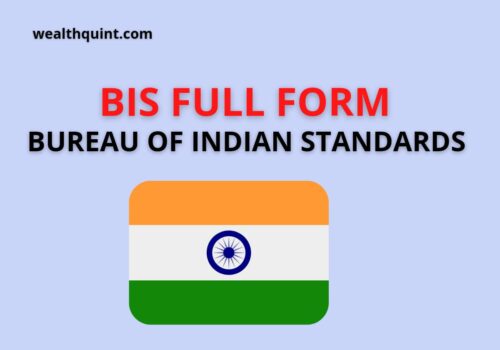What Is The Full Form Of CRR?
CRR Full Form is Cash Reserve Ratio.
CRR stands for Cash Reserve Ratio, which is one of the most significant monetary policy tools or weapons of RBI that they use to regulate or operate the liquid money supply in the larger economy and control inflation. The Cash Reserve Ratio is more specifically decided by the RBI’s Monetary Policy Committee.
RBI has some quantitative and qualitative tools to manage liquidity and CRR is one of the most useful ones amongst them. Come let’s know something more about this quantitative monetary policy tool.
Purpose Of Cash Reserve Ratio
Every bank in India needs to conserve a certain percentage or share of their demands and time liabilities (NDTL) in liquid cash with the central bank. This specific percentage or share of liquid cash that every bank has to maintain with the RBI as a deposit is called CRR.
RBI can change the Cash Reserve Ratio from time to time. They used to increase the Cash Reserve Ratio to withdraw the surplus liquidity from the economy to control the inflationary situation.
How Does The Cash Reserve Affect The Economy?
- CRR is one of the most important quantitative credit control tools of RBI. It helps to regulate the liquidity flow and control inflation. As the CRR holds up there will be less liquid cash with the Bank and vice versa.
- During inflation, the RBl needs to assure that there is no surplus money in the economy. So for that, the central bank used to increase the CRR to reduce the amount of available cash for the bank, and thus the excess cash is being withdrawn from the economy.
- Also, when the bank wants to boost the liquidity flow in the economy, it lowers the CRR. This enables the banks to provide loans to the general people for business or investment. A low CRR favorably elevates economic growth. Furthermore, one can’t neglect the fact that CRR has a direct impact on interest rates.
When Did CRR Was Introduced In The Indian Economy?
In 1950, the concept of CRR was first introduced in the Indian economy to assure the security and liquidity of bank deposits. But as time went on, CRR has become one of the most significant weapons of RBI to control the liquidity flow and inflation as well. Also since 1962, the central bank has been authorized to vary the CRR statute between 3% to 15% of the total demand and time deposits.
Objectives Of The Cash Reserve Ratio
Cash Reserve Ratio is a tool of RBI that helps in quantitative credit control. Some of the important objectives of CRR are summarized below.
- CRR is a type of “reference rate”, it assists the RBI to adjust the base rate. (The lowest lending rate below which a bank is not authorized to loan funds is called the base rate.)
- Also, Cash Reserve Ratio is one of the most important monetary policy weapons to curb inflation. During high inflation, RBI inflates the CRR. Thus they force the commercial banks to maintain excess money in reserves and this allows them to possess less money to give loans.
- Furthermore, CRR gives the assurance that a percentage of a bank’s deposit is secured by the Reserve Bank of India.
How Is CRR Calculated?
There is no particular technical formula to calculate the Cash Reserve Ratio. This is estimated as a share or percentage of NDTL.
NDTL stands for Net Demand and Time Liabilities, which is a total of the savings account, current account, and general people’s deposits balances clutched by commercial banks.
Presently, the Cash Reserve Ratio is fixed at 4.00% by the Reserve Bank of India. This conveys that as per the present regulation with every 100 rupees of NDTL, every scheduled commercial bank has to maintain 4.00 rupees with the RBI.




